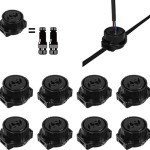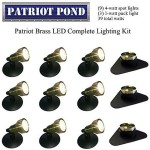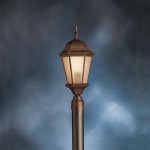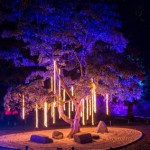Best Outdoor Flood Lights for Backyard Illumination
Outdoor flood lights serve as a crucial element in enhancing backyard safety, security, and usability. Selecting the optimal flood light for a specific backyard necessitates considering factors such as light output (measured in lumens), beam angle, energy efficiency, durability, and control features. The market offers a diverse array of options, each possessing unique attributes tailored to different needs and preferences. This article aims to provide a comprehensive overview of factors to consider when selecting flood lights and recommends top-performing models suitable for various backyard applications.
The primary function of backyard flood lighting extends beyond mere illumination. Well-placed flood lights deter potential intruders, illuminate pathways, highlight architectural features, and create an inviting ambiance for outdoor gatherings. The proper selection and installation of flood lights contribute significantly to both the aesthetic appeal and functional value of a residential property.
Understanding Lumens and Beam Angle
Lumens represent the total amount of visible light emitted by a light source. A higher lumen count translates to a brighter light. For general backyard illumination, a range of 700 to 1300 lumens is typically sufficient. However, for larger areas or those requiring enhanced security, opting for flood lights with 1500 lumens or more is advisable. The choice should also reflect the color temperature; warmer color temperatures (around 2700-3000K) create a more inviting atmosphere, while cooler color temperatures (4000-5000K) offer brighter, more focused illumination suitable for security purposes.
The beam angle, measured in degrees, determines the spread of light. A narrow beam angle concentrates light in a smaller area, ideal for highlighting specific features like statues or trees. Conversely, a wide beam angle distributes light over a larger area, making it suitable for general backyard illumination or lighting driveways and pathways. Many flood lights offer adjustable beam angles, providing flexibility in directing light where it is most needed.
Adjustable beam angles are particularly beneficial because they allow users to mitigate light pollution and direct light only towards areas that require illumination, reducing glare and preserving the nighttime environment. Consider flood lights with cutoff shields or adjustable heads which further control light directionality.
Assessing Energy Efficiency and Lifespan
Traditional flood lights often consumed significant amounts of energy, leading to higher electricity bills. Modern LED (Light Emitting Diode) flood lights offer a far more energy-efficient alternative. LEDs consume significantly less power than incandescent or halogen bulbs while producing comparable or even superior light output. The energy efficiency of an LED flood light is typically expressed in lumens per watt (lm/W). A higher lm/W ratio indicates greater energy efficiency.
The lifespan of a flood light is another crucial consideration. LED flood lights boast significantly longer lifespans than their traditional counterparts. A typical LED flood light can last for 25,000 to 50,000 hours, reducing the frequency of replacements and minimizing maintenance costs. The long lifespan of LEDs also means less waste is generated over time, contributing to environmental sustainability.
When comparing different LED flood lights, always check the Energy Star rating. Energy Star certified products meet stringent energy efficiency standards and are rigorously tested to ensure they deliver the promised performance. Choosing Energy Star certified models provides assurance of energy savings and product reliability.
Evaluating Durability and Weather Resistance
Outdoor flood lights are exposed to the elements, including rain, snow, extreme temperatures, and UV radiation. Choosing flood lights constructed from durable, weather-resistant materials is essential to ensure long-term performance and reliability. Common materials used in flood light construction include aluminum, polycarbonate, and stainless steel.
Aluminum is lightweight, corrosion-resistant, and provides excellent heat dissipation, helping to extend the lifespan of the LED components. Polycarbonate is a durable, impact-resistant plastic that is often used for lenses and housings. Stainless steel offers superior corrosion resistance, making it suitable for coastal environments or areas with high humidity.
The Ingress Protection (IP) rating indicates the level of protection a flood light offers against dust and water intrusion. An IP rating consists of two digits: the first digit represents protection against solid objects (dust), and the second digit represents protection against liquids (water). For backyard flood lights, an IP rating of IP65 or higher is recommended. An IP65 rating signifies that the flood light is protected against dust and water jets from any direction.
In coastal regions, or areas with frequent exposure to saltwater, opting for flood lights specifically designed for marine environments is advisable. These lights feature enhanced corrosion resistance and are typically constructed from marine-grade aluminum or stainless steel.
Examining Control Features and Smart Home Integration
Modern flood lights offer a range of control features that enhance convenience and functionality. These features include motion detection, dusk-to-dawn operation, dimming capabilities, and smart home integration. Motion-activated flood lights provide an added layer of security by automatically turning on when motion is detected, deterring potential intruders.
Dusk-to-dawn flood lights utilize integrated photocells to automatically turn on at dusk and off at dawn, providing consistent illumination without manual intervention. This feature is particularly useful for security lighting and pathway illumination. Dimming capabilities allow users to adjust the brightness of the flood lights to create the desired ambiance or conserve energy.
Smart flood lights can be integrated into a smart home ecosystem, allowing users to control the lights remotely via a smartphone app or voice commands. Smart flood lights often offer advanced features such as scheduling, geofencing, and integration with other smart home devices. Some smart flood lights also include built-in cameras and speakers, providing enhanced security features.
When selecting flood lights with smart home integration, ensure compatibility with your existing smart home platform (e.g., Amazon Alexa, Google Assistant, Apple HomeKit). Also, consider the security features of the smart flood light, such as encryption and two-factor authentication, to protect your privacy.
Considering Installation and Maintenance
Proper installation is crucial for ensuring the performance and longevity of outdoor flood lights. Many flood lights are designed for easy DIY installation, while others may require professional installation. Carefully read the manufacturer's instructions before attempting to install flood lights yourself.
Before installing flood lights, ensure that the electrical wiring is properly grounded and that the circuit breaker is appropriately sized. If you are unsure about any aspect of the electrical installation, consult a qualified electrician. Pay attention to the mounting height and angle of the flood lights to achieve optimal illumination and avoid glare.
Maintenance of outdoor flood lights is typically minimal. Regularly clean the lenses with a soft cloth to remove dirt and debris. Inspect the wiring and connections periodically to ensure they are secure and free from corrosion. Replace any damaged parts promptly to maintain the flood light's performance and safety.
For flood lights located in hard-to-reach areas, consider hiring a professional to perform maintenance and repairs. This will ensure that the work is done safely and correctly, preserving the flood light's warranty and reliability.
Selecting the best outdoor flood light for a backyard requires carefully considering various factors ranging from lumen output and beam angle to energy efficiency and durability. By understanding the specific needs of your outdoor space and taking into account the features of available flood light models, it becomes possible to make an informed decision and enhance the safety, security, and aesthetic appeal of your backyard environment.

8 Best Flood Lights In 2024 Our Top Picks

8 Best Flood Lights In 2024 Our Top Picks

The 3 Best Smart Outdoor Lights For Backyards Of 2024 Reviews By Wirecutter

How To Choose The Best Led Flood Light For Backyard Ledmyplace

The 7 Best Ways To Light Up Your Backyard Sansbury Electric

Led Flood Lights What You Need To Know

Best Outdoor Floodlights Top Led Flood Lights With Sensors High Quality Reviewed Shetland S Garden Tool Box

The 7 Best Outdoor Flood Lights For Home Security In 2024

Best Outdoor Floodlights Top Led Flood Lights With Sensors High Quality Reviewed Shetland S Garden Tool Box

The Ultimate Guide To Choosing Best Outdoor Security Lights
Related Posts







